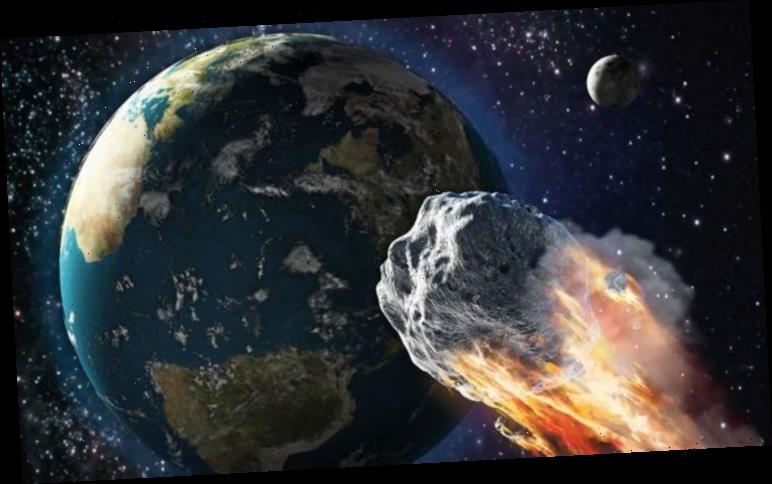At 21 metres long, the space rock is similar in size to a blue whale and would cause major damage to a city if it hit. The impressive asteroid, known as 2019 SL7, is travelling at a staggering speed of 17.1 kilometres per second – or 61,500 kilometres per hour. The space rock is set to fly past Earth on October 9, putting NASA on alert.
According to the space agency, 2019 SL7 will fly by at a distance of 1.4 lunar distances (LD). One LD is the distance between the Earth and the Moon.
In other words, the asteroid will pass Earth at a distance of 538,162 kilometres, which is close enough for NASA to class it as a near-Earth object (NEO).
The space agency states than anything which comes within 1.3 astronomical units (AU) is classed as a NEO. One AU is the distance between the Earth and the Sun, around 150 million kilometres.
The close approach will allow NASA to study the asteroid.
NASA said: “Near-Earth Objects (NEOs) are comets and asteroids that have been nudged by the gravitational attraction of nearby planets into orbits that allow them to enter the Earth’s neighbourhood.
“As the primitive, leftover building blocks of the solar system formation process, comets and asteroids offer clues to the chemical mixture from which the planets formed some 4.6 billion years ago.
“If we wish to know the composition of the primordial mixture from which the planets formed, then we must determine the chemical constituents of the leftover debris from this formation process – the comets and asteroids.”
At 21 metres long, the asteroid will bring back memories of the Chelyabinsk meteor.
In 2013, a 20 metre meteor exploded over Chelyabinsk, Russia, smashing windows and caused injuries to more than 1,000 people.
Experts had not anticipated the incident, leading to fears that Earth could be surprised by a more devastating asteroid strike in the future.
While the chances of a major asteroid hitting Earth are small – NASA believes there is a one in 300,000 chance every year that a space rock which could cause regional damage will hit – the devastating prospect is not impossible.
This is why there are now plans in the pipeline which could help Earth from asteroids.
NASA is currently studying Asteroid Bennu, where its OSIRIS-Rex spacecraft arrived last year.
Part of the reason NASA is sending the OSIRIS-Rex spacecraft there is to gather more information about the space rock which is 500 metres in length.
NASA fears that the asteroid, which has the potential to wipe out a country on Earth, could hit our planet within the next 120 years, with the next close flyby in 2135.
Source: Read Full Article




